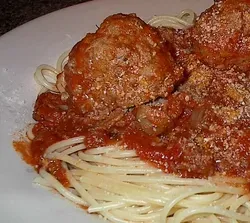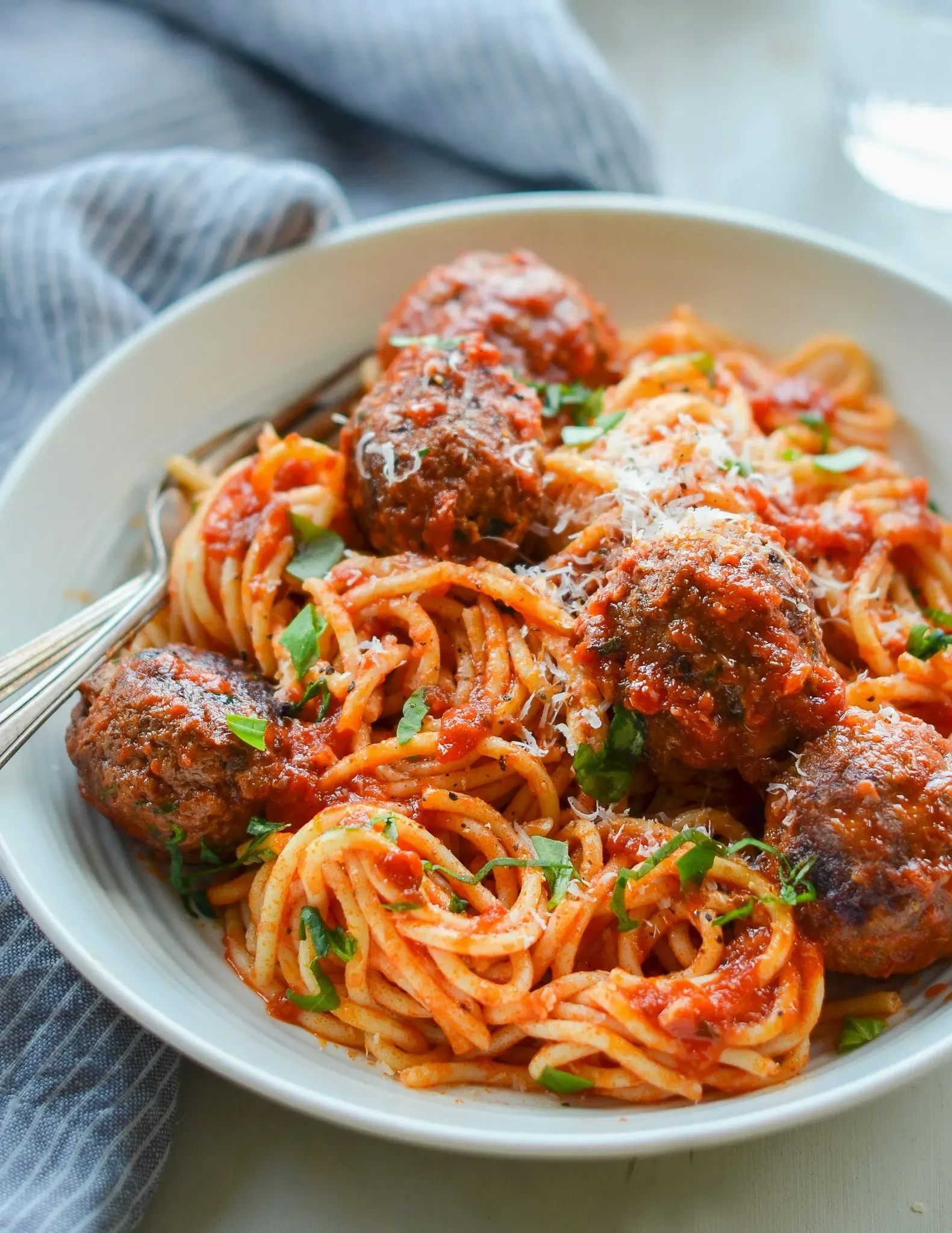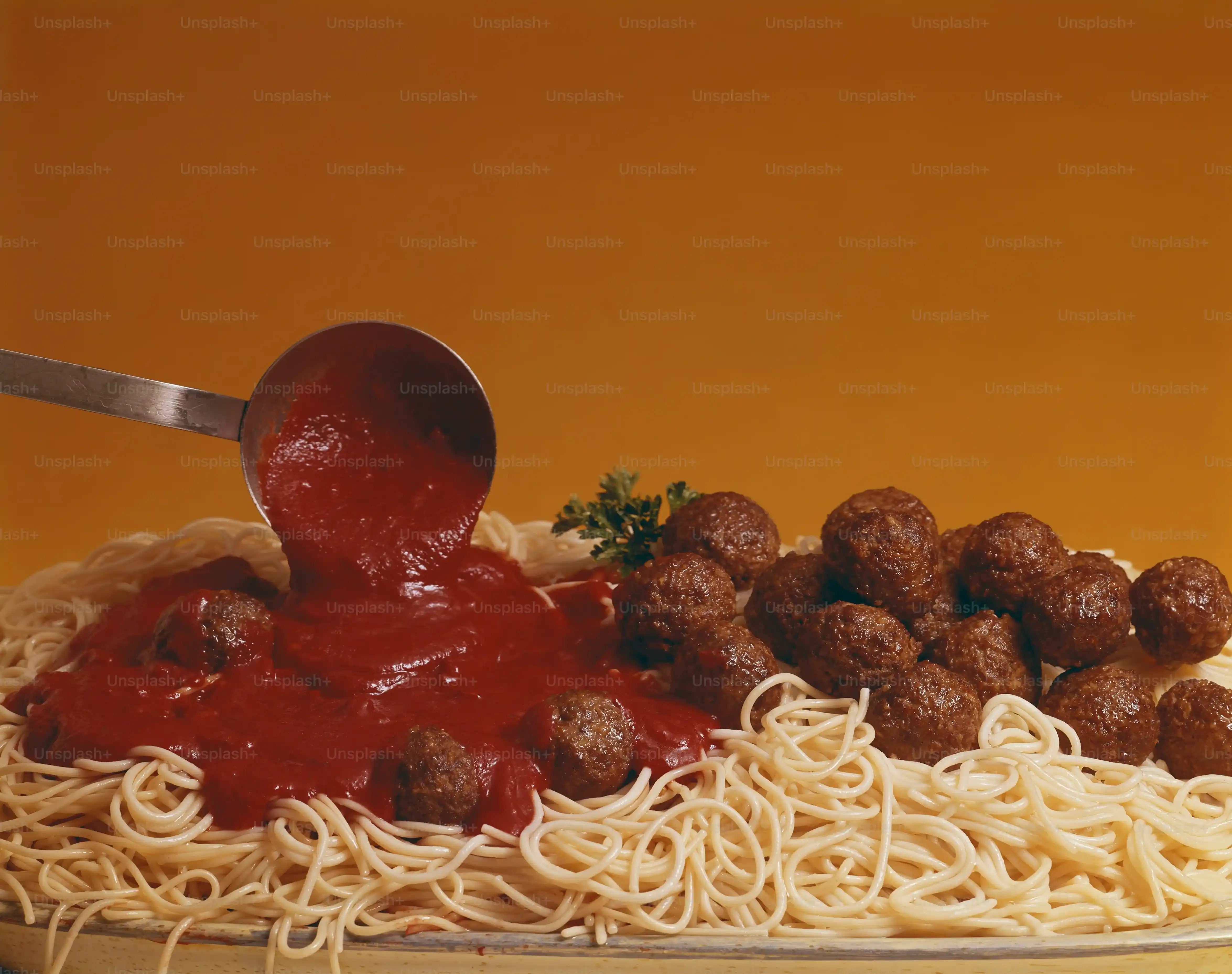Table of Contents
Let's be honest. You've had spaghetti and meatballs. Maybe you've even *made* spaghetti and meatballs. But have you had *5 star meatballs for spaghetti*? You know the kind – tender, juicy, packed with flavor, the kind that makes you close your eyes and hum a little tune. The kind that doesn't resemble rubber bouncy balls or dry, crumbly pucks. If your homemade attempts have fallen short of this culinary nirvana, you're not alone. It's a common kitchen frustration. We see those glossy food magazine photos and wonder what magic potion is being sprinkled. Is it a secret blend of spices? A mystical cooking method? Or perhaps sacrificing a small, innocent pasta shape to the culinary gods?
Why Your 5 Star Meatballs for Spaghetti Dream Feels Out of Reach

Why Your 5 Star Meatballs for Spaghetti Dream Feels Out of Reach
The Case of the Dry, Crumbly Meatball
You followed a recipe. You mixed the meat, added breadcrumbs, maybe an egg. You rolled them up, dropped them in the sauce, and waited. The anticipation was real. Then you cut into one, and instead of a tender, yielding bite, you got something that felt like sawdust packed together. It crumbled on the fork, absorbed sauce like a sponge, and tasted... well, mostly like dry meat. This is perhaps the most common reason your quest for 5 star meatballs for spaghetti hits a wall. It often comes down to the wrong ratio of ingredients, overmixing, or simply not enough moisture in the initial mix.
Where's the Flavor? Unlocking the Taste Puzzle
Maybe your meatballs weren't dry, but they tasted... flat. Like ground meat that took a brief, uninspired dip in tomato sauce. You expected an explosion of savory goodness, herbs singing, maybe a hint of cheese sharpness. Instead, you got muted tones. Achieving that deep, complex flavor profile in 5 star meatballs for spaghetti isn't just about the sauce; it starts *in* the meatball itself. Often, the issue is timid seasoning. People are afraid of overdoing it, so they underdo it, resulting in a bland orb that just sits there.
- Using lean meat only (fat equals flavor and moisture).
- Overworking the meat mixture (develops toughness).
- Not enough binder (meatballs fall apart).
- Too much binder (results in dense, heavy meatballs).
- Skimping on salt, garlic, herbs, and cheese.
- Cooking method doesn't allow flavors to meld properly.
- Expecting the sauce to do all the heavy lifting for flavor.
Are You Asking Too Much, Too Soon?
Let's be real. Some recipes promise the moon, but don't explain the how or why. You see "5 star" and think it's just about throwing ingredients together. But making truly exceptional meatballs requires a little nuance, an understanding of what each component does. Are you using just one type of meat when a blend offers better texture and flavor? Are you skipping the crucial step of soaking your breadcrumbs or bread? Are you frying them first when simmering in sauce is the goal for tenderness? Often, the dream feels out of reach because the foundational techniques for achieving 5 star meatballs for spaghetti aren't being applied correctly, or at all.
Crafting the Perfect Blend for 5 Star Meatballs for Spaghetti

Crafting the Perfect Blend for 5 Star Meatballs for Spaghetti
It Starts with the Meat (and What You Mix In)
Alright, let's talk foundation. You can't build a five-star house on a shaky base, and you can't make truly 5 star meatballs for spaghetti with just any old ground beef. The magic blend usually involves a mix of meats. Think equal parts ground beef (80/20 is your friend here for fat and flavor), ground pork (adds tenderness and richness), and maybe even some ground veal if you're feeling fancy and want that classic Italian deli texture. Using just lean beef is a one-way ticket to Dryville. The fat renders down, keeping the meatballs moist and infusing the sauce with incredible flavor as they simmer. Beyond the meat, the binder is crucial. Forget dry breadcrumbs straight from the can. We're talking about soaking stale bread in milk or water, or using fresh breadcrumbs. This hydrated binder keeps everything tender and prevents that dense, heavy texture. And please, for the love of good food, don't skimp on the seasoning. Garlic, onion (finely grated so it melts in), fresh parsley, Pecorino Romano cheese, salt, and black pepper are non-negotiables. Some folks add a pinch of red pepper flakes for a little kick. Taste your *mixture* before you roll and cook (a tiny cooked piece, of course) – it's the only way to know if you're on the right track to 5 star meatballs for spaghetti.
What's the one ingredient you absolutely refuse to omit when aiming for 5 star meatballs?
Cooking Methods: Simmering Your Way to 5 Star Meatballs for Spaghetti

Cooking Methods: Simmering Your Way to 5 Star Meatballs for Spaghetti
Why Simmering is Your Secret Weapon
Alright, so you've got your perfectly mixed meatball blend, seasoned just right, feeling tender and ready. Now, how do you cook these little flavor bombs without turning them into sad, tough orbs? This is where the magic happens for truly 5 star meatballs for spaghetti. Forget baking them dry on a sheet pan or giving them a quick, aggressive fry. The absolute best way to achieve that melt-in-your-mouth texture is to cook them *directly in the sauce*. As the meatballs simmer slowly in the tomato goodness, they absorb moisture and flavor from the sauce while their own fat renders out, enriching the sauce in return. It's a beautiful, symbiotic relationship. This gentle, moist heat prevents the exterior from seizing up and becoming tough, allowing the inside to cook through evenly and stay incredibly tender. It’s not the fastest method, sure, but if you're chasing that 5-star quality, shortcuts just don't cut it here.
The Simmering Process: Low and Slow Wins the Race
Once your sauce is simmering gently, you carefully drop the rolled meatballs right into it. Don't overcrowd the pot; cook in batches if necessary. The sauce should partially cover them. The key is to maintain a low, consistent simmer – just a few gentle bubbles breaking the surface. A rolling boil will break them apart and toughen them up. Let them hang out in that warm, flavorful bath for at least an hour, preferably two or even three. As they simmer, they swell slightly, becoming incredibly tender. This slow infusion of sauce into the meatball and meatball flavor into the sauce is what builds layers of depth, pushing them firmly into the 5 star meatballs for spaghetti category. Resist the urge to stir too vigorously, especially early on, to keep their shape intact.
- Simmering ensures maximum tenderness.
- Meatballs absorb flavor from the sauce.
- Meatball fat enriches the sauce.
- Prevents meatballs from drying out.
- Creates a cohesive dish where flavors meld.
Sauce Pairings That Elevate Your 5 Star Meatballs Experience
The Classic Marinara: A Meatball's Best Friend (If Done Right)
Look, when you think of 5 star meatballs for spaghetti, you probably picture them swimming in a rich, vibrant red sauce. And you're not wrong. A classic marinara is the go-to for a reason. But not just any jarred stuff you grabbed in a rush. We're talking about a sauce built with good quality crushed tomatoes, maybe some San Marzanos if you're feeling fancy, sautéed garlic, a pinch of red pepper flakes for warmth, and fresh basil simmered low and slow. This isn't just a vessel for the meatballs; it's half the show. As your meticulously crafted 5 star meatballs for spaghetti simmer in this fragrant bath, they release their savory goodness, thickening the sauce slightly and infusing it with layers of flavor that you just can't replicate any other way. The sauce needs to be robust enough to stand up to the meatball but not so overpowering that it drowns out their delicate texture. It's a balance, a dance.
Beyond Red: Exploring Other Saucy Possibilities
Who says 5 star meatballs for spaghetti are *only* for red sauce? While it's the undisputed champion, don't be afraid to venture out. Imagine those tender meatballs nestled in a creamy mushroom sauce, perhaps with a hint of white wine. Or maybe a rich, slow-cooked ragu where the meatballs become one component of a larger, meaty symphony. Even a simple garlic and olive oil sauce (Aglio e Olio) can work, allowing the pure flavor of the 5 star meatballs to shine through, perhaps finished with a sprinkle of parmesan and fresh parsley. Thinking outside the traditional marinara box can open up a whole new world of weeknight dinners or impressive guest meals. It proves these meatballs are versatile players.
What's the most unexpected sauce you've successfully paired with meatballs?
- Classic Marinara (slow-simmered)
- Creamy Mushroom Sauce
- Rich Beef or Pork Ragu
- Simple Aglio e Olio (with quality olive oil)
- Spicy Arrabbiata
- Lemon-Herb White Wine Sauce
The Sauce's Role in Achieving "5 Star" Status
Let's be clear: a truly 5 star meatball needs a worthy partner. A lackluster sauce will drag down even the most perfectly cooked meatball. The sauce shouldn't just coat the pasta and meatballs; it should enhance them. It should cling just right, offering acidity to cut through the richness of the meat, or creaminess to complement their tenderness. When you achieve that synergy – the juicy, flavorful meatball meltingly tender, coated in a sauce that sings with fresh ingredients and depth – that's when you hit the 5 star mark. It's the combination, the way the flavors and textures interact on your palate, that elevates the dish from good to unforgettable. Don't treat the sauce as an afterthought; it's integral to the entire 5 star meatballs for spaghetti experience.
Troubleshooting Common Meatball Mistakes

Troubleshooting Common Meatball Mistakes
Why Your Meatballs Are Dry and Tough
So, you followed a recipe, rolled your meatballs, and ended up with something resembling a hockey puck more than a tender orb? The dry, tough meatball is a classic rookie error on the path to 5 star meatballs for spaghetti. This usually boils down to a few culprits. First, the meat itself. If you're using super lean ground beef, you're stripping away the fat that melts and keeps things moist. Aim for that 80/20 blend. Second, overmixing. Think of meat like dough; the more you work it, the tougher it gets as proteins develop. Be gentle when combining your ingredients – just mix until everything is *just* combined, no more. Finally, check your binder. Dry breadcrumbs suck moisture. Using fresh bread soaked in milk or water, or even panko, provides necessary hydration that stays locked in during cooking.
Battling the Bland Ball Syndrome
Another common disappointment? Meatballs that look good but taste like... well, not much. You wanted that explosion of savory, herbaceous flavor, but got a muted whisper. This is almost always a case of timid seasoning. People are scared of salt, scared of garlic, scared of being bold. But for truly 5 star meatballs for spaghetti, you need to season generously. We're talking a decent amount of salt (remember, meat needs more salt than you think), finely minced or grated garlic, plenty of fresh parsley, and a good handful of grated Pecorino Romano or Parmesan cheese. Don't just eyeball it; measure, then maybe add a little more. Taste a tiny cooked sample before you roll the whole batch. It's a professional trick for a reason.
- Use meat with enough fat (80/20 beef, pork).
- Do not overmix the meatball mixture.
- Hydrate your binder (soaked bread or panko).
- Season aggressively with salt, garlic, herbs, and cheese.
- Don't rely solely on the sauce for flavor.
- Cook gently, preferably by simmering in sauce.
Meatballs Falling Apart in the Sauce
You've got your sauce simmering, you gently drop in your carefully rolled meatballs, and ten minutes later, you've got meat sauce with unfortunate, formless lumps. This is frustrating. The main reason meatballs disintegrate is usually a lack of sufficient or proper binder. The egg and the soaked bread or breadcrumbs are what hold everything together. Did you skip the egg? Did you use too little binder? Was your binder too dry? The ratio matters. You need enough binder to create a matrix that holds the meat fibers together without making the meatballs dense. Also, be gentle when adding them to the sauce and resist the urge to stir constantly, especially in the first 20-30 minutes of simmering. Let them firm up slightly before giving them a gentle nudge.
Your Journey to 5 Star Meatballs
So there you have it. No secret handshake, no ancient texts, just a clear path to crafting 5 star meatballs for spaghetti that actually deliver on the promise of tenderness and flavor. It turns out, the difference between a forgettable meatball and one that earns bragging rights isn't about innate talent, but about paying attention to the details – the right mix, the gentle hand, the patient simmer. Stop settling for hockey pucks in sauce. Put these methods to work, and you might just find yourself wondering why you didn't aim for the stars sooner.